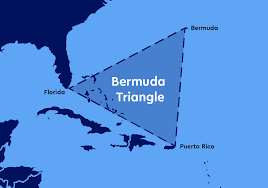The sinking of the RMS Titanic remains one of the most infamous maritime disasters in history. Known as the “unsinkable ship,” the Titanic’s fate shocked the world when it struck an iceberg and sank during its maiden voyage from Southampton to New York City on April 15, 1912. Out of the more than 2,200 people on board, over 1,500 lost their lives. This tragedy left an indelible mark on maritime safety regulations and continues to be remembered more than a century later.
In this blog, we’ll explore the exact death toll, factors that contributed to the high number of casualties, and the historical significance of the event.
The Number of People Who Died on the Titanic
According to historical records, around 1,517 people perished in the Titanic disaster. However, this figure varies slightly depending on the source, as some passenger lists were incomplete or inaccurate. The Titanic carried 2,224 people in total, including passengers and crew.
Here’s the breakdown:
-
Passengers: Approximately 1,317
-
Crew members: Approximately 907
-
Survivors: About 706
-
Deaths: About 1,517
The tragedy was intensified by the fact that the ship’s lifeboats could only accommodate about half of the passengers and crew, and many lifeboats were launched without being filled to capacity.
Passenger Class and Survival Rates
Survival rates varied dramatically between different classes of passengers:
-
First Class:
-
Number aboard: Around 324
-
Survivors: About 201
-
Deaths: About 123
-
Survival rate: ~62%
-
-
Second Class:
-
Number aboard: Around 284
-
Survivors: About 118
-
Deaths: About 166
-
Survival rate: ~42%
-
-
Third Class:
-
Number aboard: Around 709
-
Survivors: About 178
-
Deaths: About 531
-
Survival rate: ~25%
-
-
Crew:
-
Number aboard: Around 907
-
Survivors: About 214
-
Deaths: About 693
-
Survival rate: ~24%
-
These statistics reveal a stark reality: wealth and location on the ship heavily influenced survival chances. First-class passengers had better access to lifeboats, while many third-class passengers were trapped below deck due to locked gates and lack of timely evacuation orders.
Why Did So Many People Die?
Several factors contributed to the massive loss of life:
1. Insufficient Lifeboats
The Titanic carried only 20 lifeboats, enough for about 1,178 people. This met the outdated safety regulations of the time, which were based on a ship’s tonnage rather than the number of people on board. Even worse, many lifeboats launched partially empty.
2. Delayed Evacuation Orders
Captain Edward Smith and the officers hesitated before ordering lifeboats to be loaded. Some passengers believed the ship was safe and refused to board, not realizing the seriousness of the damage.
3. Poor Communication
Crew members were not fully trained for an emergency evacuation of such scale. Miscommunication and lack of coordination led to confusion and panic.
4. The Cold Atlantic Waters
The frigid waters of the North Atlantic, about -2°C (28°F), meant that those who fell in could only survive for a few minutes before succumbing to hypothermia.
5. Class Barriers
Third-class passengers were disadvantaged by their location deep in the ship and by physical barriers that delayed their access to lifeboats.
Notable Victims of the Disaster
The sinking claimed the lives of many well-known figures of the time, including:
-
John Jacob Astor IV: One of the richest men in the world.
-
Isidor and Ida Straus: Co-owners of Macy’s department store. Ida famously refused a lifeboat seat to stay with her husband.
-
Thomas Andrews: The Titanic’s chief designer, who helped others escape but went down with the ship.
Their deaths symbolized the tragedy’s reach, affecting both the wealthy elite and ordinary immigrants seeking a new life in America.
Survivors and Stories of Survival
The survivors, numbering about 706, were rescued by the RMS Carpathia, which arrived approximately two hours after the Titanic sank. Many survivors shared harrowing stories of escape—some clinging to overturned lifeboats, others pulled from the freezing waters at the last moment.
Impact on Maritime Safety
The disaster led to major reforms in maritime safety, including:
-
Mandatory lifeboats for all passengers on ships.
-
24-hour radio communication on passenger vessels.
-
Creation of the International Ice Patrol to monitor iceberg dangers in the North Atlantic.
These changes have saved countless lives in the years since the tragedy.
Remembering the Titanic
The Titanic’s sinking was more than a maritime accident—it was a global shock that exposed flaws in technology, human judgment, and safety regulations. The figure of 1,517 deaths is not just a statistic but a reminder of individual lives lost: families torn apart, dreams unfulfilled, and futures cut short.
Today, memorials, museums, and films like Titanic (1997) keep the story alive for new generations. The wreck’s discovery in 1985 added further insight into the ship’s final moments, and expeditions continue to study and preserve its legacy.
Conclusion
The question of “How many people died on the Titanic?” has a heartbreaking answer—over 1,500 souls. Beyond the numbers lies a story of human vulnerability, class divisions, and the urgent need for safety measures. Remembering those who perished ensures that the lessons of April 15, 1912, are never forgotten.
The Titanic’s legacy serves as both a cautionary tale and a memorial to those who lost their lives on that cold, moonless night in the North Atlantic.
